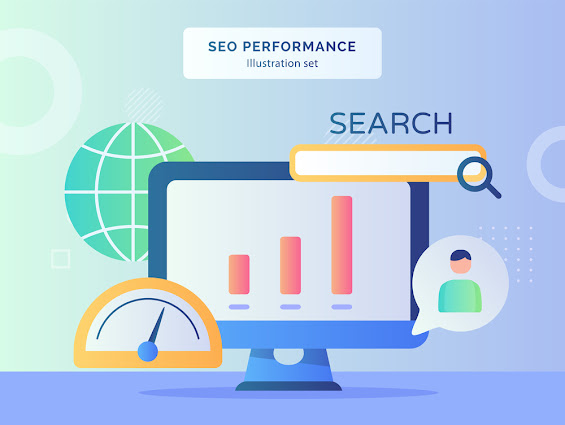Optimizing Website Performance: Key Management Techniques
A fast, seamless website experience is critical for engaging and converting visitors. With 47% of consumers expecting web pages to load in 2 seconds or less, slow sites lead to frustration and lost business. By optimizing performance, brands can provide smooth interactions to boost key metrics like visitor satisfaction, lead generation, and sales.
Managing an optimized website requires both technical and strategic efforts across teams - IT oversees site infrastructure while marketers manage content and user experience flows. Collaboration is essential. Many performance barriers come down to management decisions on platform capabilities, resource allocation, and improvement processes.
Here are the top techniques for optimizing and managing website performance:
Choose a High-Performance Platform
A website platform sets boundaries for features, scalability, and speed. Leading content management systems like WordPress and Sitecore enable dynamic experiences but can slow down at larger volumes. E-commerce platforms may better support sales yet constrain broader business content. Newer “headless” CMS options only manage content while separate front-end frameworks handle design and delivery for greater flexibility.
Conducting capability and load testing during evaluation stages helps verify system strengths and weaknesses. It also establishes entry-level baselines to measure future optimization efforts. The ideal platform balances business goals, traffic demands, and speed.
Implement Performance Monitoring
Monitoring website analytics provides visibility into bottlenecks hurting both visitor experience and business performance. Tracking key metrics over time coupled with setting target thresholds helps benchmark progress for improvement initiatives:
Page load speed - Pages taking over 3 seconds lead to a large drop in conversion rates
Site uptime/availability - Even brief periods of downtime negatively impact visitor trust and SEO
Server response times - Lagging response times indicate stressed resources
Error rates - Frequent errors frustrate visitors and hinder usability
Traffic surges - Understand and scale to handle spikes to prevent crashes
Free web monitoring tools like Pingdom or UptimeRobot provide website availability data while Google Analytics tracks engagement metrics. IT teams also deploy advanced application performance management (APM) to diagnose granular technical issues.
Continually Monitor Optimization Efforts
The work does not stop after initial optimization. Changes to web content, third-party tags, and promotions can gradually weigh down performance. Continual assessment ensures sites remain streamlined:
Page weight/load behavior - Heavier pages, images or files have slow delivery
Page rendering - Inspect the progressive display for visitors to see priority content first
Code optimization - Remove unnecessary scripts and enable browser caching of assets
Core web vitals - Monitor key user experience metrics in Google Analytics
A/B testing - Assess the impact of incremental changes on performance
Regular lightweight testing with Website.com’s Page Speed or Google Lighthouse provides optimization status checks for maintaining speed.
Improve Server Infrastructure
Website infrastructure forms the foundation for what visitors experience on the front end. Failing to provide adequate backend resources leads to frequent outages, slow load times, and inability to scale. IT teams must properly size server capacity for current and projected traffic volumes.
Scale horizontally across servers to increase capacity
Implement load balancing for distributing traffic to multiple servers
Scale vertically by upgrading to more powerful servers when needed
Utilize caching technologies - CDNs and memory caches reduce workloads
Shift towards flexible cloud infrastructure to allocate compute resources on demand. Cloud hosting through Amazon Web Services, Microsoft Azure or Google Cloud provides high availability and expands elastically to accommodate usage spikes.
Enhance Code Efficiency
Inefficient code creates bottlenecks that hinder rendering and interactivity. Stripping down to core essentials and utilizing best practices enhances website speed.
Minify HTML, CSS, and JavaScript files to eliminate whitespace and comments
Lazy load non-critical code until needed
Async JavaScript to parse in the background without blocking
Optimize images and media files for reduced file sizes
Eliminate unnecessary redirects across pages
Enable GZIP compression to reduce file transfer sizes
Conducting code audits identifies quality improvements to scale better through clean and streamlined code.
Reduce Server Response Times
High server response times indicate lagging backend processes negatively impact visitor experiences on the front end. Target server response times under 200 ms for supporting snappy user flows.
Database optimization - Tune queries and database structure for faster lookups
Application profiling - Pinpoint sluggish application logic needing rewrite
Language efficiency - Choose efficient backend languages like Go over Python
Hardware upgrades - Scale-up server CPU or memory resources as needed
Distribute workloads across read replicas of databases or implement object caching layers to reduce database loads.
Prioritize Core User Flows
Understand primary conversion paths to determine website priorities and direct optimization efforts:
Analytics analysis - Identify top landing/exit pages signaling key flows
Visitor recordings - See typical browse order and pain points
User testing - Direct observation of behavior patterns
Shape information architecture and page designs to directly support priority user journeys for easy navigation. Also optimize technical elements specifically along main flows - speeding checkout conversion funnels before enhancing blog layouts as an example.
Streamline Pages
Excessive page weight from overpopulated design elements, widgets, and media drag down performance. Practice UX minimalism by:
Simplifying page layouts and eliminating nonessential content
Establishing maximum page weight targets by section
Structuring single-page views instead of multi-step wizards
Lazy loading of non-critical content after page load
Keeping pages focused directly serves user intentions without distraction or overload - improving the experience.
Resize and Compress Images
Image optimization should be an ongoing initiative as rich visuals strongly influence perception yet carry heavy page weight.
Use vector images over raster when possible
Enable next-gen formats like JPEG 2000/XC and AVIF
Lossless compression removes unnecessary image data
Resize images per layout, don’t force one size
Automated tools like ew Image Optimizer can mass resize, compress, and format shift images for significant bandwidth savings.
While balancing dense features with speed poses challenges, brands who continually tune website performance reap the high engagement and conversions that follow the optimal visitor experience. Managing proactive monitoring, improvement testing and platform enhancements ultimately pay dividends through maximizing online business value.




Comments
Post a Comment